The sensory bin is always a favorite in our classroom. Children explore the world using their 5 senses. The sensory bin offers children the chance to explore by seeing, smelling, hearing and especially touching! Therefore, it is probably one of the most important centers in the early childhood classroom.

Benefits of a Sensory Bin
As we all know, children best learn through play. Preschool is a time where children transition from parallel play to playing with one or more children. The evolution of this development is easily witnessed in the sensory bin. With the right number of tools and toys, children can explore the sand or water on their own…almost as if they were in a bubble. Consequently, play is very focused and usually quite calm.
Then, almost instinctively, the children will take notice of how a friend is playing and decide to mimic or join in. If met with no resistance, they begin to make a sandhill for instance, or bury the animals in the bin together. This kind of cooperative play makes this center even more important than ever!
-
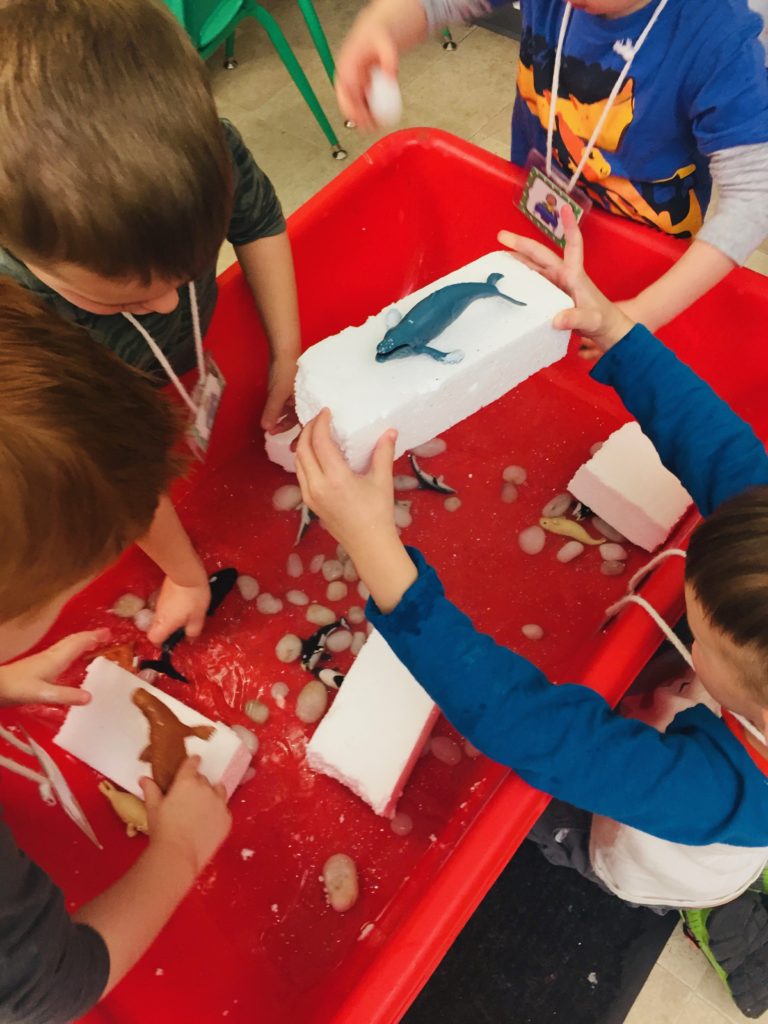
Water & Polar Animals -
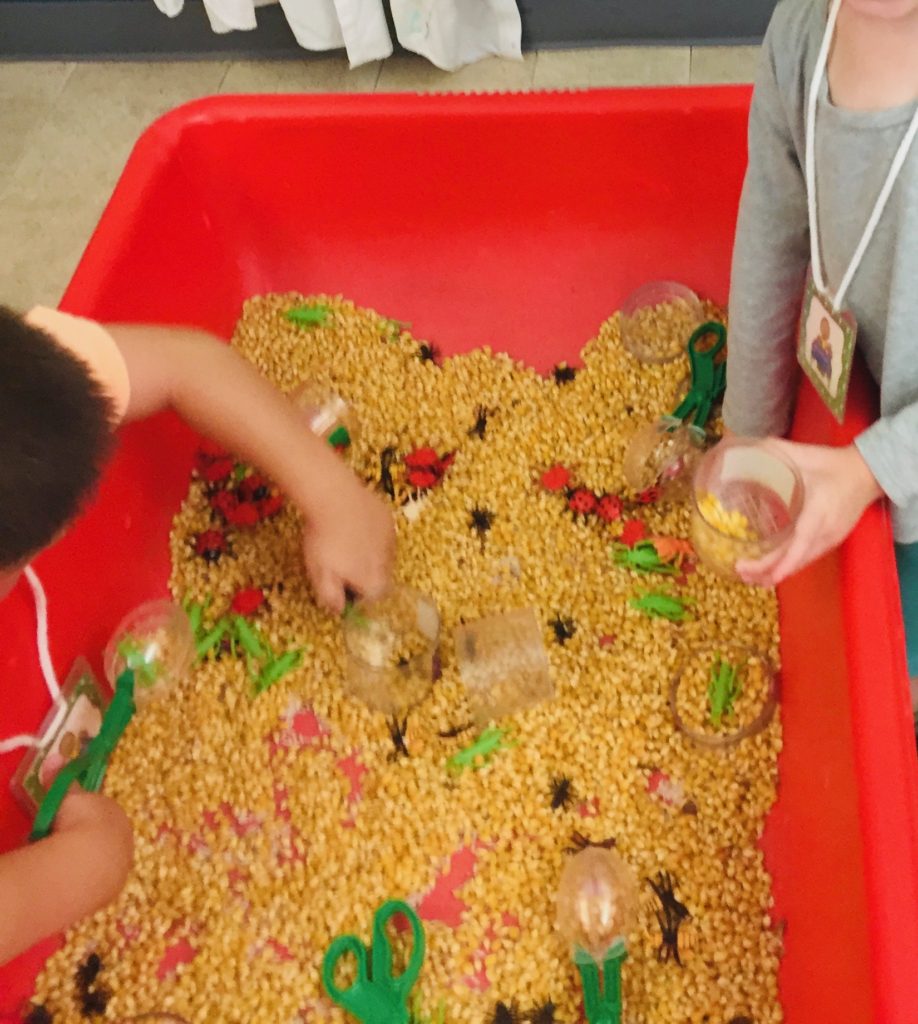
Bugs -
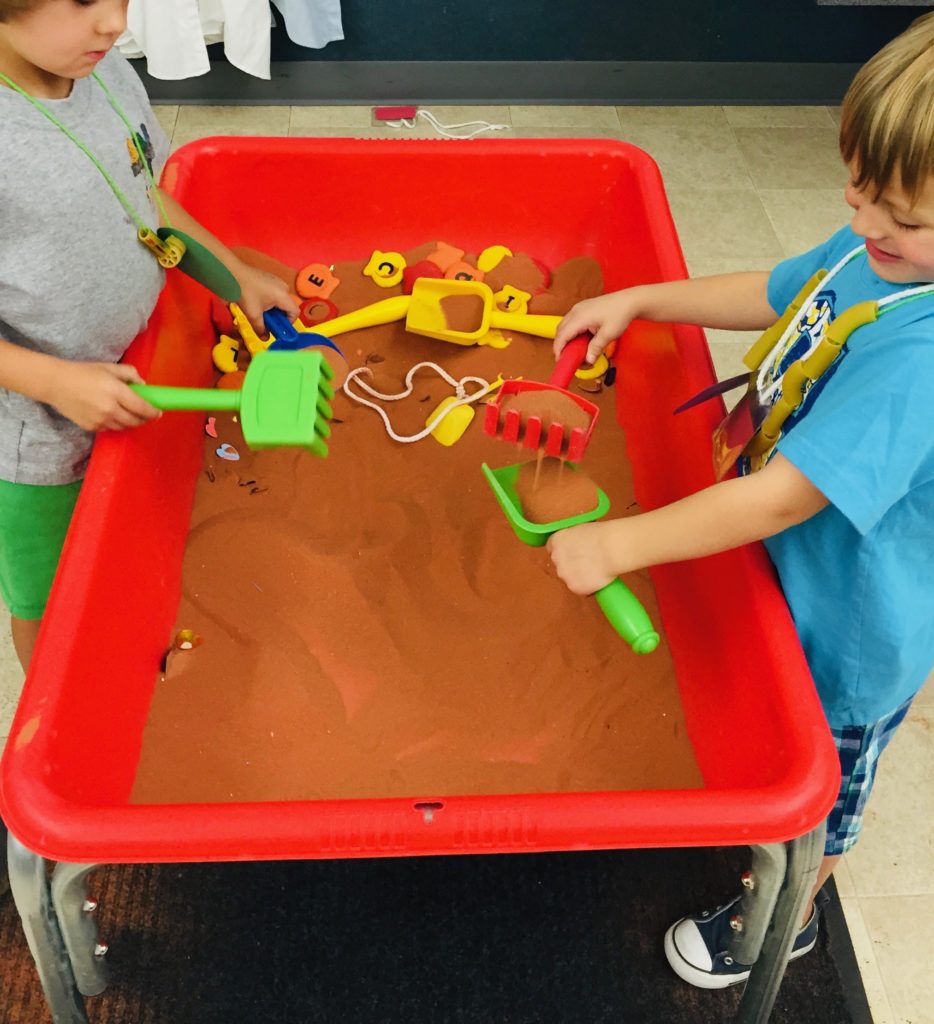
Letter Hunt
Similarly, children begin to engage in meaningful conversation as their hands are busy exploring and experiencing what is in the sensory bin. There is a lot of development in oral language, using their imaginations, and creativity. The laughter and silly outbursts at the sensory bin may seem a bit disruptive, but it is all part of normal, happy development.
Finally, the development of life skills and fine motor skills are greatly enhanced in the sensory bin. Most noteworthy, the actions of scooping, dumping, and pouring increase hand-eye coordination. With scooping and dumping comes important math skills of measurement, volume, and capacity. As a result, little hands become stronger as children grip tools, manipulate different substances and toys, and make discoveries.
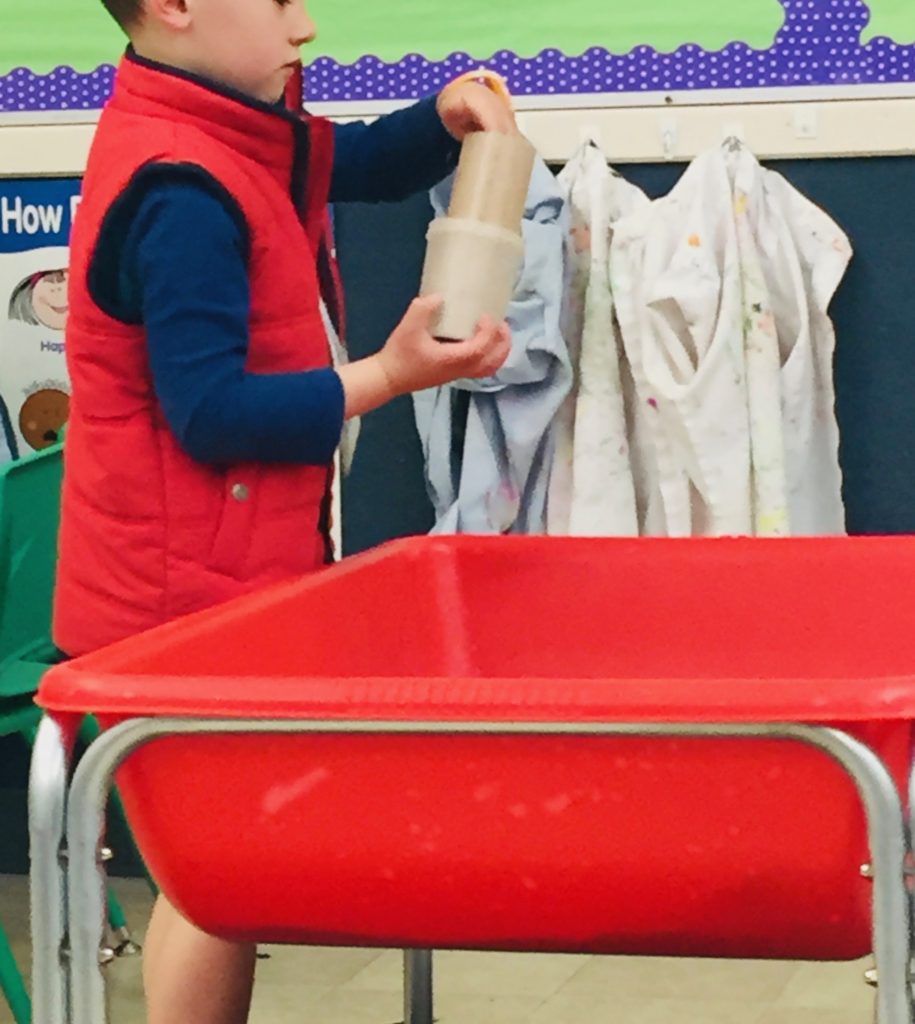
Because sensory bin play is about discovery and experience, I cannot overstate the impact this kind of play has on scientific learning. With the simple act of feeling and manipulating different substances, children discover the properties of solids, liquids and even some interesting things that fall somewhere in between! It really is quite magical.
Mess vs Success
Sensory bins are notoriously messy. Many teachers will shy away from sensory bin use to avoid the inevitable mess. My personal opinion is that the learning opportunities outweigh the inconvenience of the clean-up. I don’t mind seeing colored rice all over the floor if it got there through discovering how rice feels slipping through fingers or figuring out how much rice is too much for the proffered scoops!
-
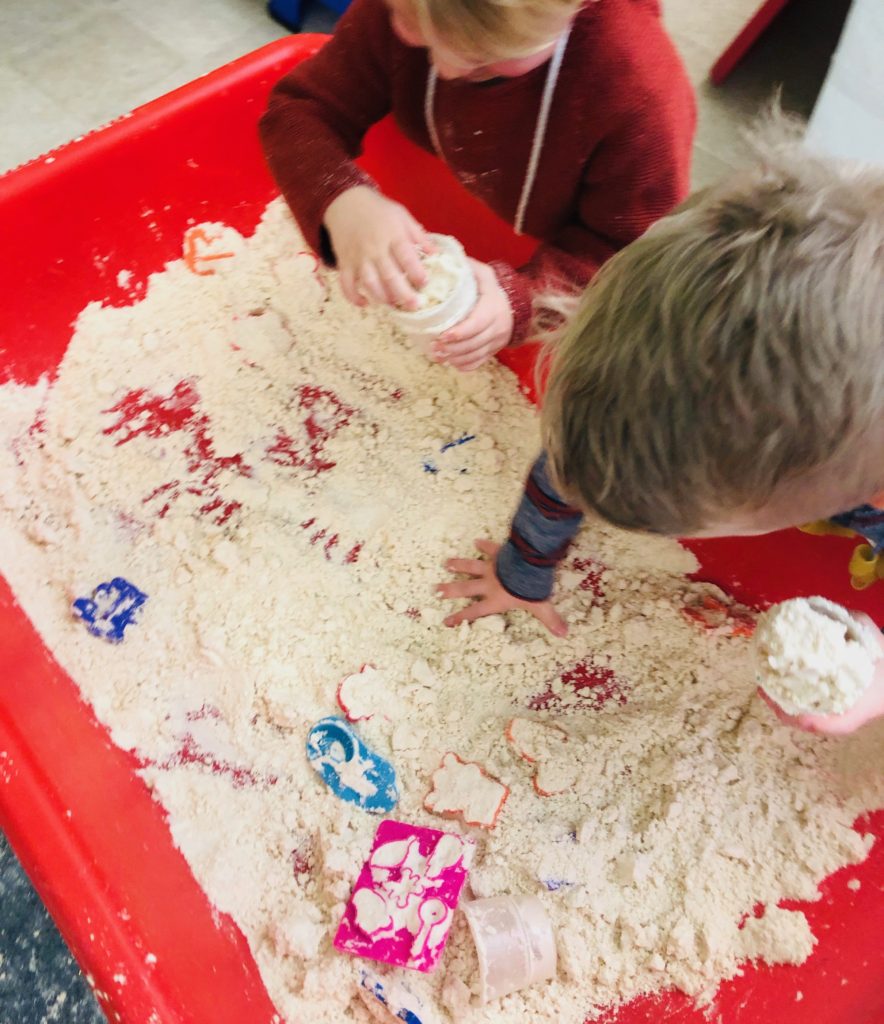
cloud dough -
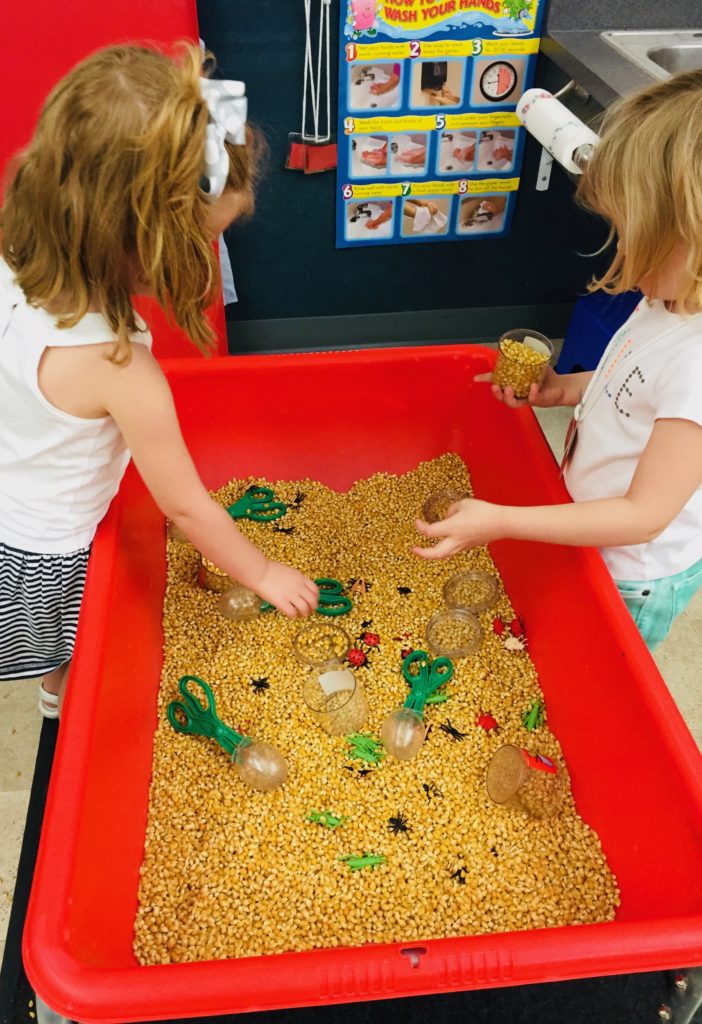
popcorn kernels
Setting Clear Rules and Procedures
To cut down on the mess and the noise the sensory center can create in my classroom, I have clear and purposeful rules and procedures in place. Each day before we break into our center time, I state the rules of the sensory center. The rules are simple and few. One scoop per child, no pouring above chest level, if you spill it-you clean it up, if you receive more than one reminder of the rules…you’re out until the next day. I also have a necklace system in place keeping the number of children at each center limited to 4 at a time. This doesn’t eliminate all of the chaos, but it keeps things in check.
Favorite Sensory Bin Fillers
At my school we have 3 teachers sharing sensory materials, so we have a good variety to choose from. My favorites are listed below. Some schools have chosen to discontinue using food items as sensory bin fillers ie; rice, lentils, popcorn, beans, pasta, etc. Follow your own school’s guidelines. Look at Pinterest and other online resources for great non-food ideas.
-
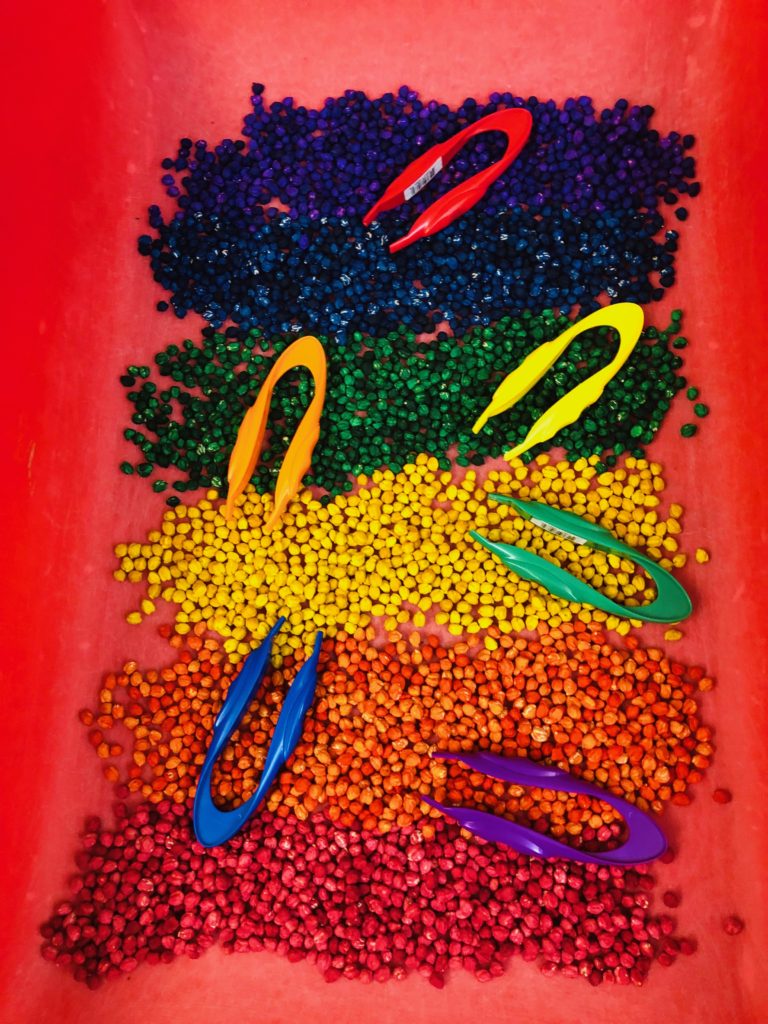
Rainbow beans -
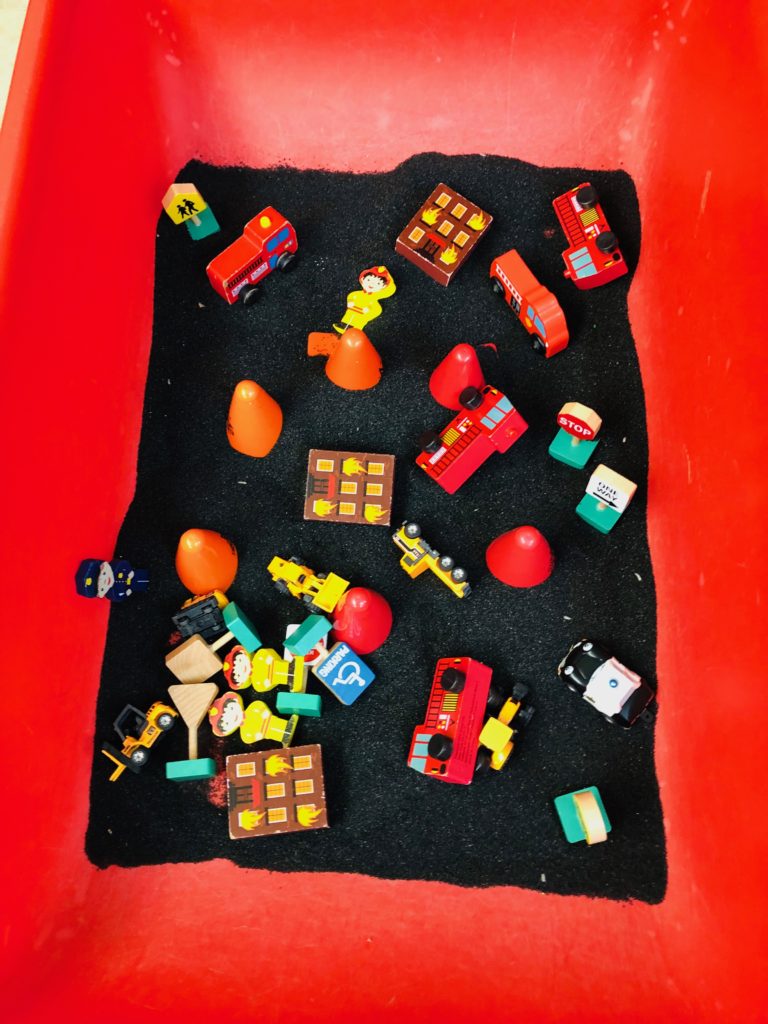
Community Helpers -
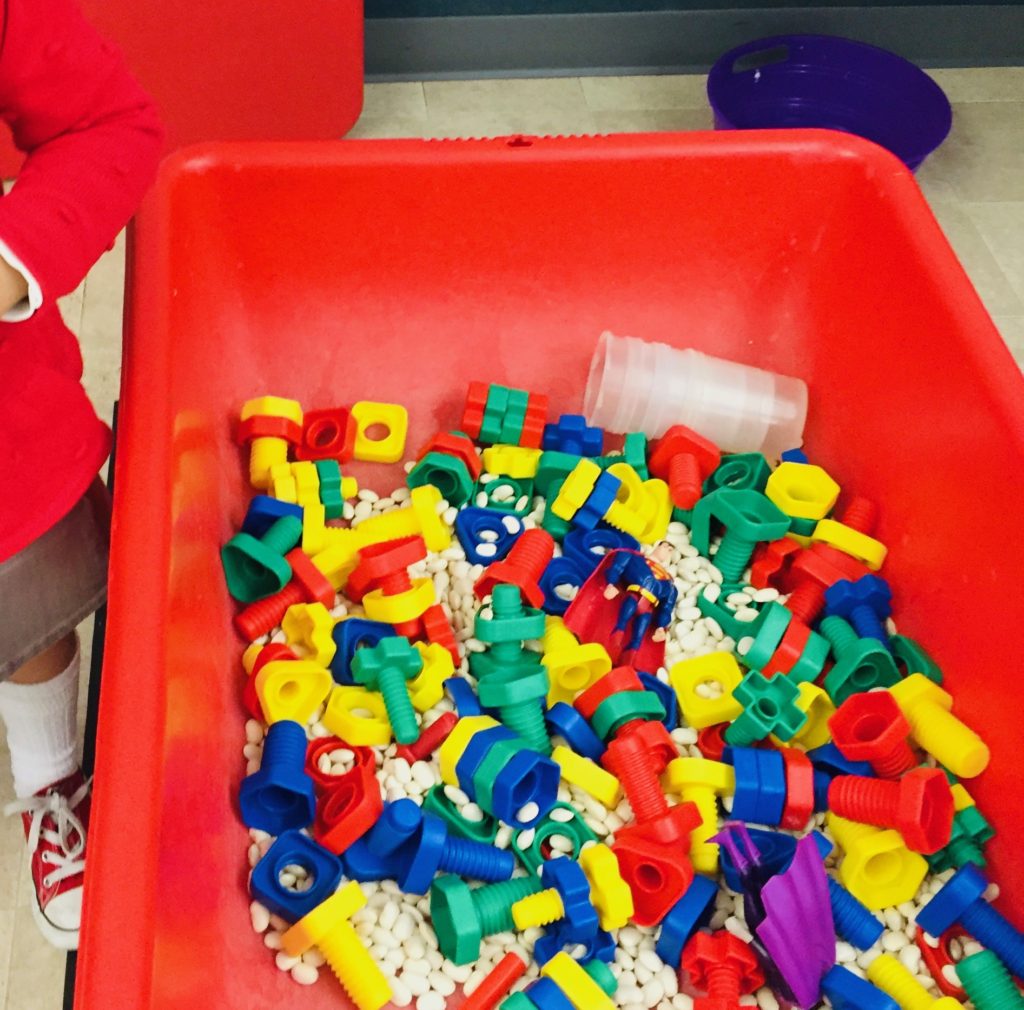
Nuts & Bolts -
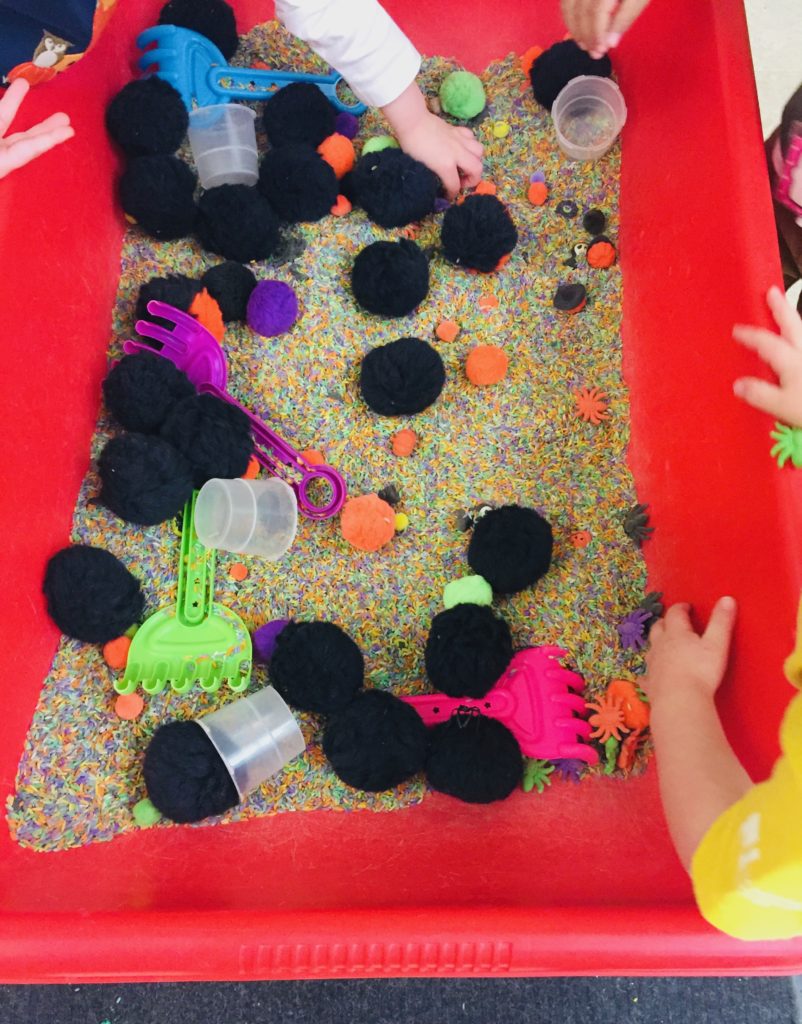
Halloween -
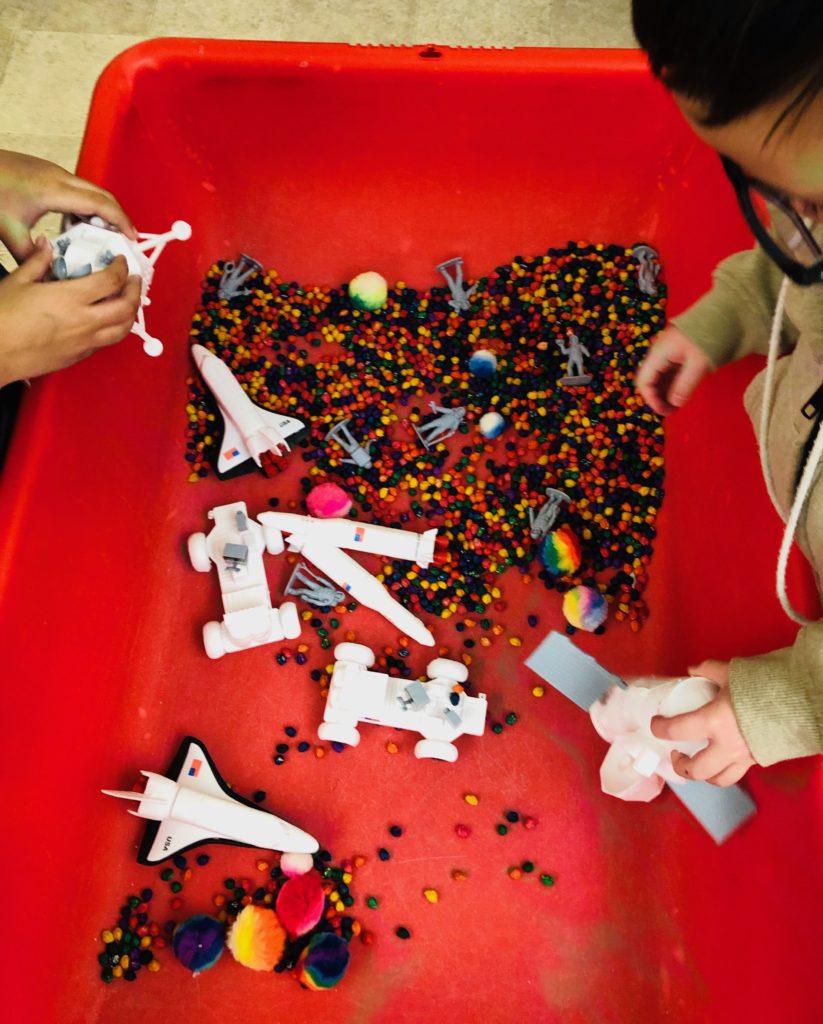
Space
- Colored rice
- Popcorn Kernels
- Pebbles
- Sand
- Water
- Water Beads
- Shredded Paper
- Pom-poms
- Cardboard Tubes
- Birdseed
- Could Dough
- Rolled Oats
- Silk Flowers & Leaves
Above all, make your sensory center interesting and fun. Also, don’t forget to change things up a bit. Try changing your sensory bin to match the season, upcoming holidays, (Halloween Valentine’s Day, Easter) or your current theme. All it takes is a little of your imagination to spark THEIR imaginations!
-
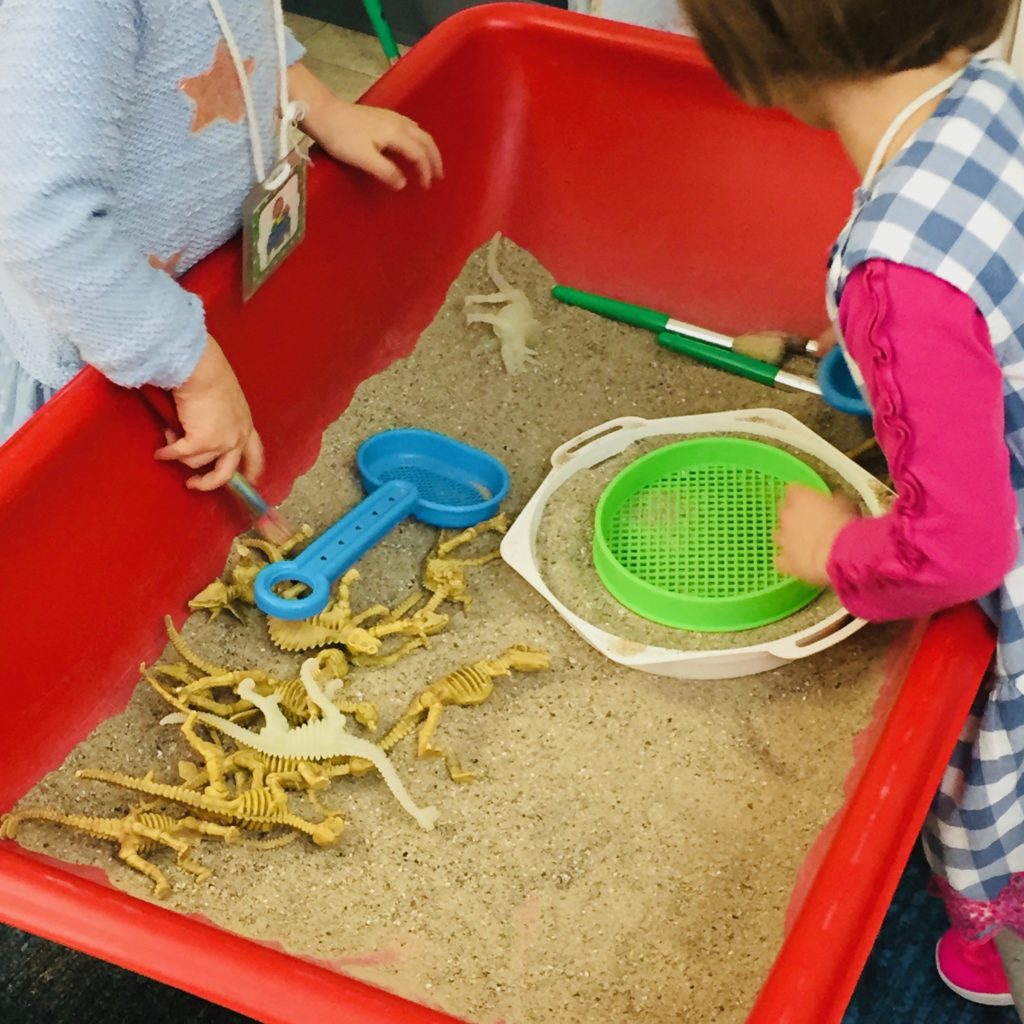
Dinosaur Dig -
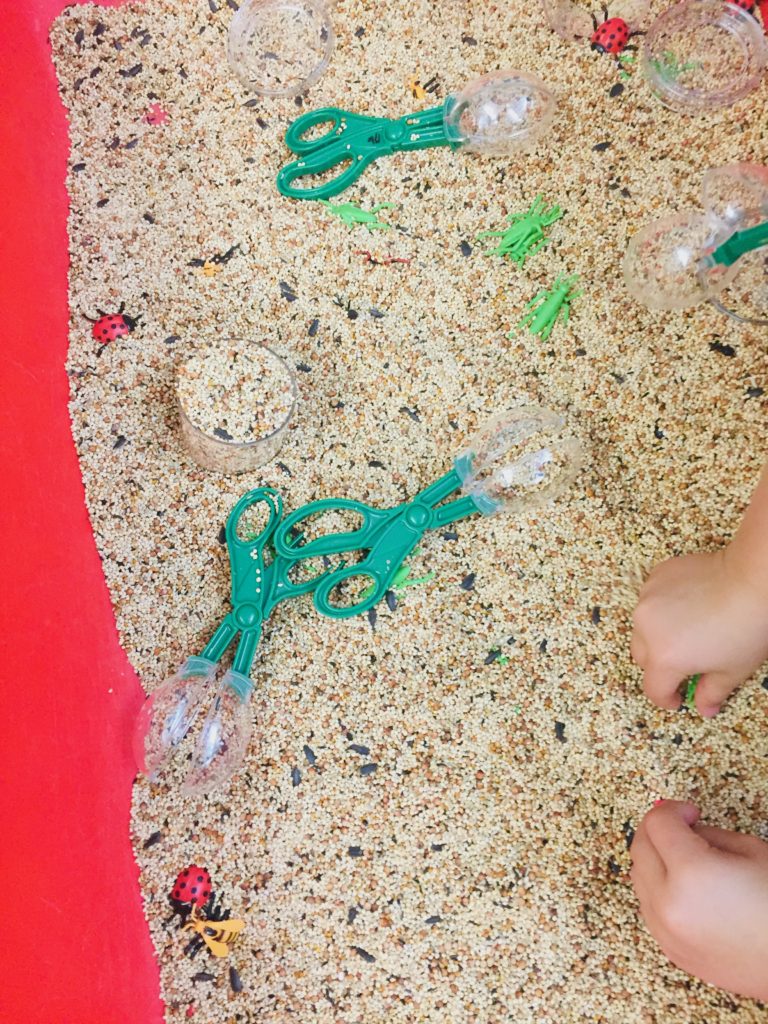
Bugs & Birdseed -
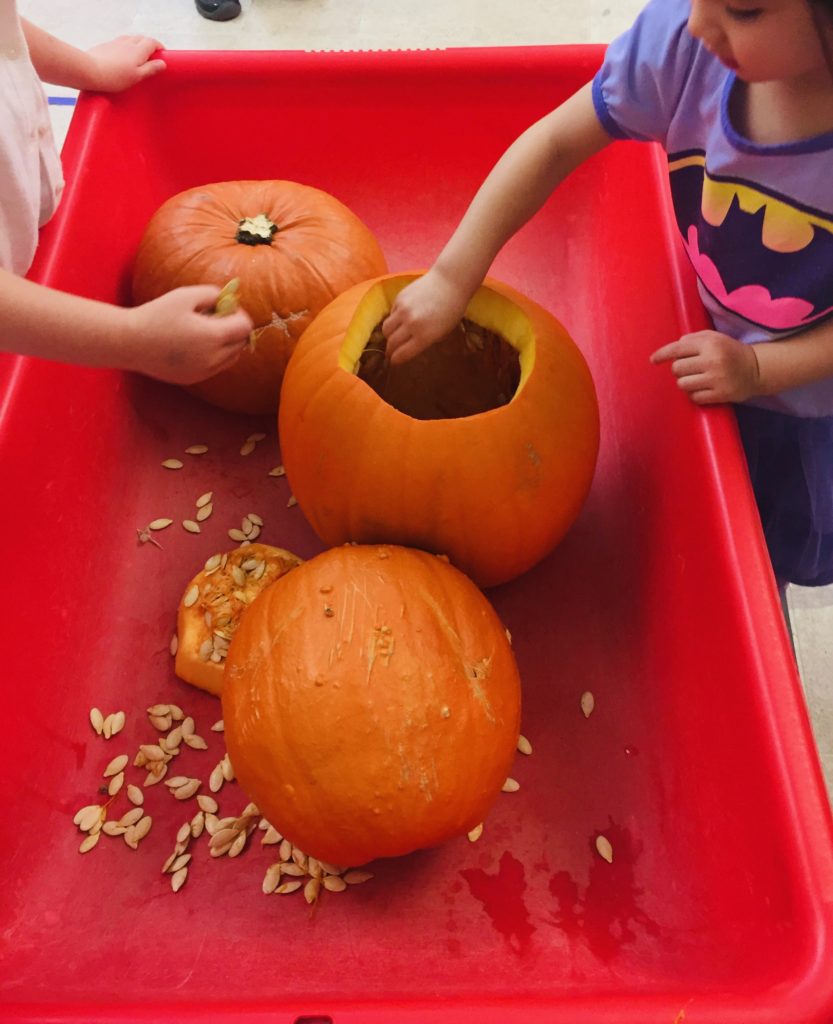
Pumpkin Exploration -
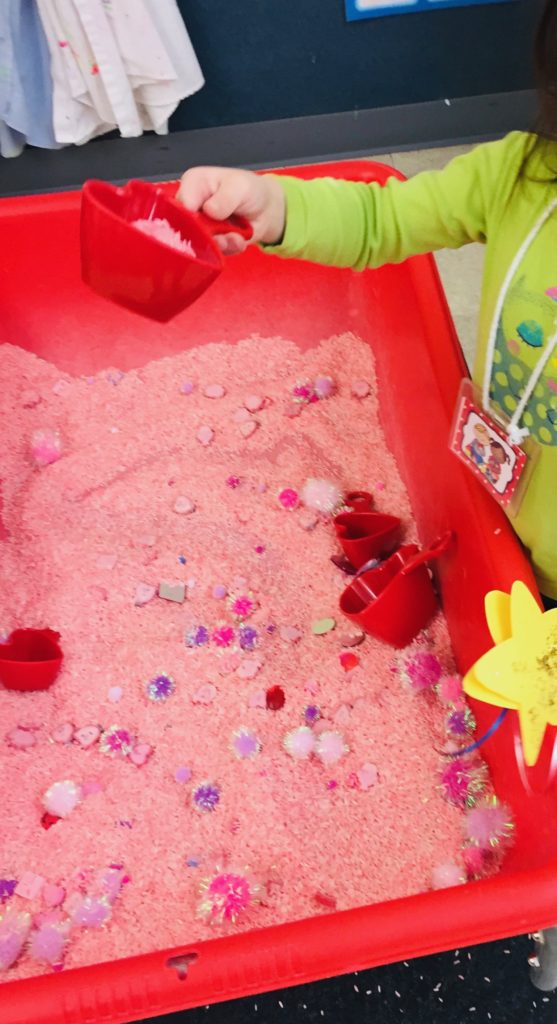
Valentine Sensory Bin





